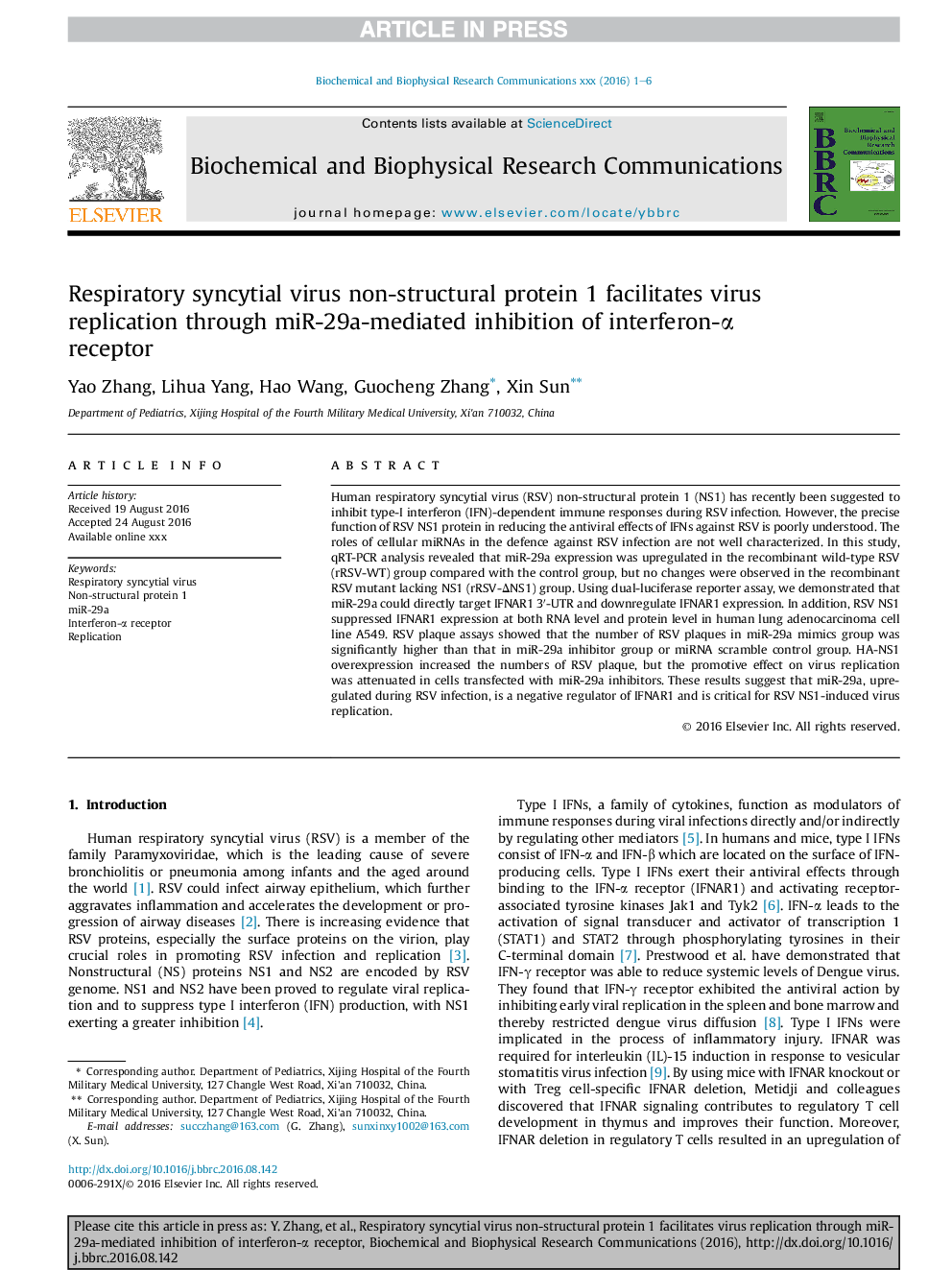| Article ID | Journal | Published Year | Pages | File Type |
|---|---|---|---|---|
| 5506755 | Biochemical and Biophysical Research Communications | 2016 | 6 Pages |
Abstract
Human respiratory syncytial virus (RSV) non-structural protein 1 (NS1) has recently been suggested to inhibit type-I interferon (IFN)-dependent immune responses during RSV infection. However, the precise function of RSV NS1 protein in reducing the antiviral effects of IFNs against RSV is poorly understood. The roles of cellular miRNAs in the defence against RSV infection are not well characterized. In this study, qRT-PCR analysis revealed that miR-29a expression was upregulated in the recombinant wild-type RSV (rRSV-WT) group compared with the control group, but no changes were observed in the recombinant RSV mutant lacking NS1 (rRSV-ÎNS1) group. Using dual-luciferase reporter assay, we demonstrated that miR-29a could directly target IFNAR1 3â²-UTR and downregulate IFNAR1 expression. In addition, RSV NS1 suppressed IFNAR1 expression at both RNA level and protein level in human lung adenocarcinoma cell line A549. RSV plaque assays showed that the number of RSV plaques in miR-29a mimics group was significantly higher than that in miR-29a inhibitor group or miRNA scramble control group. HA-NS1 overexpression increased the numbers of RSV plaque, but the promotive effect on virus replication was attenuated in cells transfected with miR-29a inhibitors. These results suggest that miR-29a, upregulated during RSV infection, is a negative regulator of IFNAR1 and is critical for RSV NS1-induced virus replication.
Related Topics
Life Sciences
Biochemistry, Genetics and Molecular Biology
Biochemistry
Authors
Yao Zhang, Lihua Yang, Hao Wang, Guocheng Zhang, Xin Sun,
